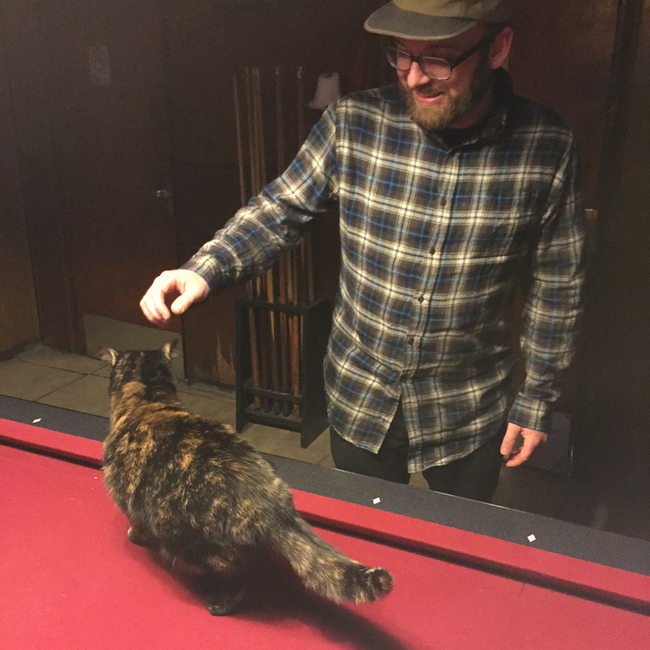As I think I’ve mentioned a time or ten, my link-wrangling on a day-to-day basis goes like this: When I find something interesting, I toss it into a draft post, a process that goes on all day, between other things.
I think it was the third item when I found they had a common theme today:

Honestly, though, the kickoff item is almost joyful. And it so happens that one of my Facebook friends was there when it happened: Bassist Jane Little, who only recently became the longest-serving orchestra musician in the world, collapsed on stage during a performance of the Atlanta Symphony Orchestra Sunday. She never regained consciousness, and died later that night. At 87, after 71 years with the ensemble.
Which would merely be sad, but not when you consider what they were playing at the moment she went down: “There’s No Business Like Show Business.” Which was their encore, in fact. And as one of her fellow players scooped her up and carried her offstage, they kept playing, so she actually left the limelight as the song reached a climax: So let’s go on with the show! A WashPost account of the incident, and her life, here.
A friend once told me he despised the platitude we so often say after someone dies: “Well, at least he died doing something he loved,” because most people don’t want to die, much less screaming toward the earth at 32 feet per second when a parachute malfunctions. In this case, though, I think we can make an exception. You couldn’t have scripted a better death; in fact, if you had scripted this, the director would have thrown it back in your face and called you Mr. Obvious.
Then, mid afternoon, I checked Twitter and found this:
Once you find the eyes, it’s just mesmerizing.
And on an animal theme, there are these outdoorsmen:
The weather at Yellowstone National Park on May 9 was fairly temperate: The low was 39 degrees Fahrenheit; the high was 50.
Nevertheless, when two tourists saw a baby bison, they decided it looked cold and needed to be rescued. So they loaded it in the trunk of their car and drove it to a ranger station.
Over the weekend, their action was widely mocked online as evidence of extreme anthropomorphism, not to mention stupidity. On Monday, the park revealed that it was also deadly — for the bison. The newborn calf had to be euthanized, the park said in a statement, because its mother had rejected it as a result of the “interference by people.”
My eyeballs just sprained themselves, they rolled so hard.
Finally, an astounding long-form project from the NYT, on the city’s century-old potters field on Hart Island. It’s very long, and I haven’t gotten all the way through it, but what I’ve seen is remarkable: Deep history, a slow burn of anger over the policy that dumps so many people in mass graves there, impressive enterprise (when the city wouldn’t let the media observe or photograph an interment, they hired a drone). And great writing:
New York is unique among American cities in the way it disposes of the dead it considers unclaimed: interment on a lonely island, off-limits to the public, by a crew of inmates. Buried by the score in wide, deep pits, the Hart Island dead seem to vanish — and so does any explanation for how they came to be there.
To reclaim their stories from erasure is to confront the unnoticed heartbreak inherent in a great metropolis, in the striving and missed chances of so many lives gone by. Bad childhoods, bad choices or just bad luck — the chronic calamities of the human condition figure in many of these narratives. Here are the harshest consequences of mental illness, addiction or families scattered or distracted by their own misfortunes.
But if Hart Island hides individual tragedies, it also obscures systemic failings, ones that stack the odds against people too poor, too old or too isolated to defend themselves. In the face of an end-of-life industry that can drain the resources of the most prudent, these people are especially vulnerable.
Indeed, this graveyard of last resort hides wrongdoing by some of the very individuals and institutions charged with protecting New Yorkers, including court-appointed guardians and nursing homes. And at a time when many still fear a potter’s field as the ultimate indignity, the secrecy that shrouds Hart Island’s dead also veils the city’s haphazard treatment of their remains.
The best single detail is about the AIDS row: Buried 14 feet deep, instead of the usual three. Just 16 bodies, but it brings back an era in a way few other memories do.
Have I bummed you out enough yet? Just think of Jane Little. On with the show!









